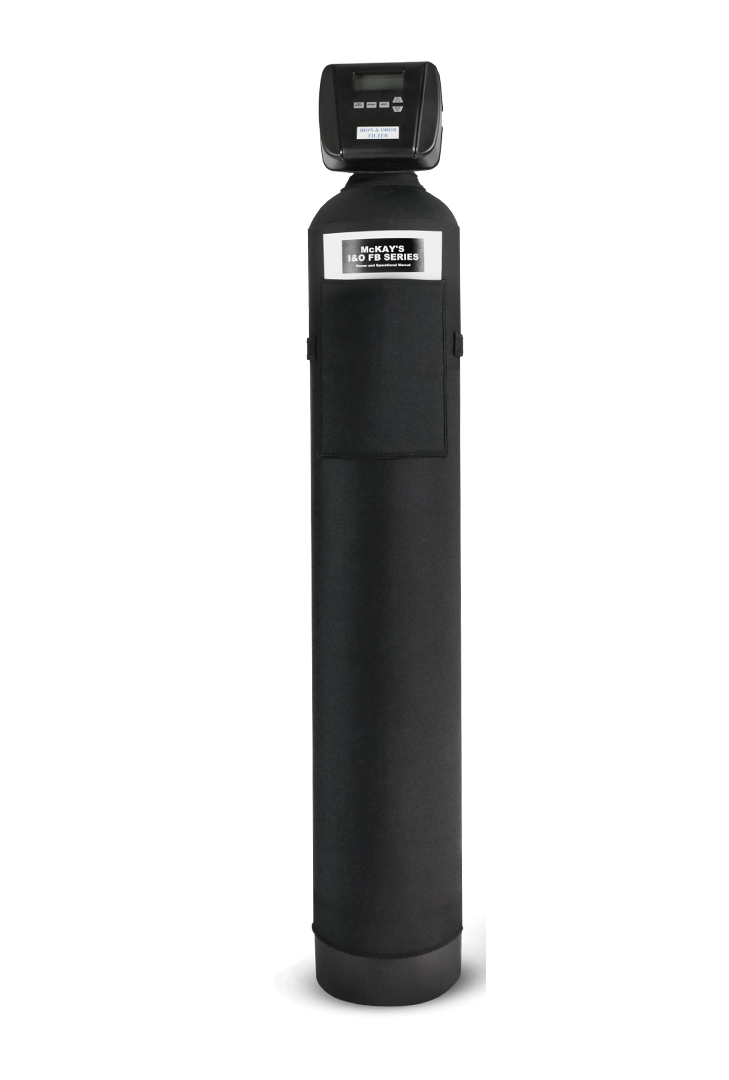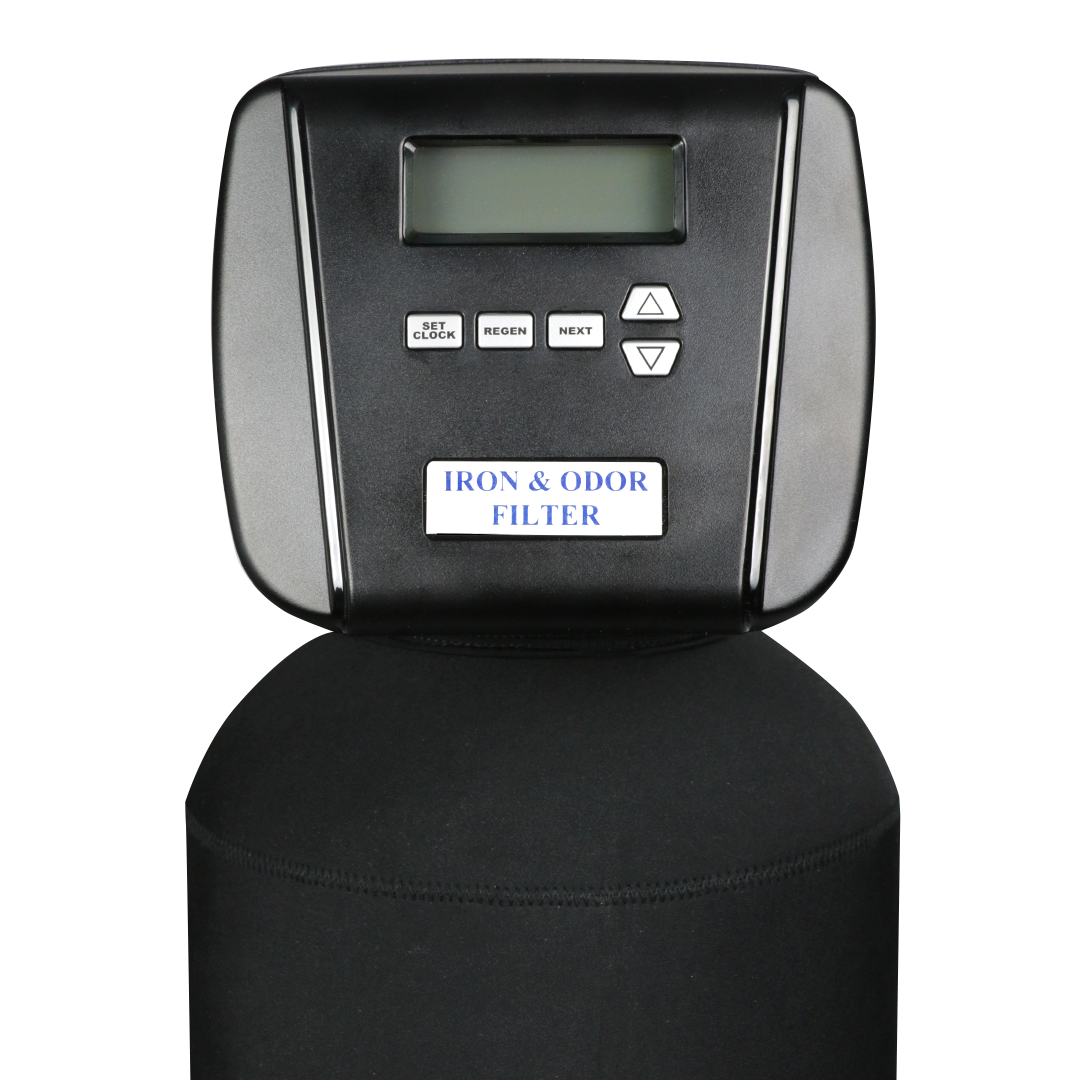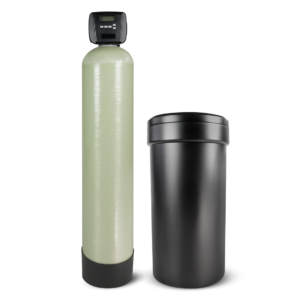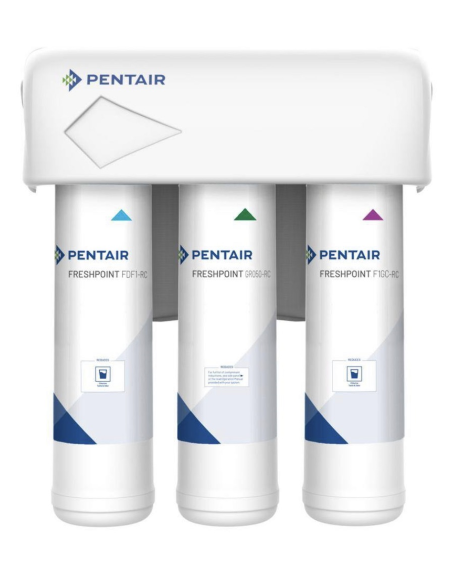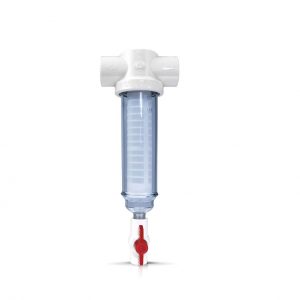Chemical-Free Iron/Odor/Taste Filter
Yellow or red colored water is often a good indication that iron is present. Similar to how iron in a metal pail turns to rust when exposed to water and oxygen, iron minerals in water turn to rust and stain your shower tiles and tub, washing machine, toilet, dishwasher, drains, and more. Agitating the water or adding oxidants such as chlorine bleach or other home cleaners containing chlorine can accelerate this process. Iron can also result from corrosion of iron or steel well casing or water pipes.
To help prevent problems with iron staining, the EPA has recommended that your water should contain no more than 0.3 parts per million (ppm or milligrams per liter [mg/L]) dissolved iron.
Model No.
Chemical-Free Iron/Odor/Taste Filter
Yellow or red colored water is often a good indication that iron is present. Similar to how iron in a metal pail turns to rust when exposed to water and oxygen, iron minerals in water turn to rust and stain your shower tiles and tub, washing machine, toilet, dishwasher, drains, and more. Agitating the water or adding oxidants such as chlorine bleach or other home cleaners containing chlorine can accelerate this process. Iron can also result from corrosion of iron or steel well casing or water pipes.
To help prevent problems with iron staining, the EPA has recommended that your water should contain no more than 0.3 parts per million (ppm or milligrams per liter [mg/L]) dissolved iron.
Model No.
How it works
How does a Chemical Free Iron & Odor Filter work?
The iron filtration system contains a “media bed,” like a water softener, but in this case, the media is not resin but an oxidizing agent such as manganese dioxide.
- Water enters your home from a main water pipe or well, and travels to the chemical-free iron & odor filter.
- When water passes through the media bed, the media attracts soluble ferrous iron and converts it to an insoluble state. The filter captures the iron precipitate, leaving the water iron-free.
- Iron-free water exits the tank and flows to a water softener or through the plumbing throughout your home.
- The system is maintained with periodic backwashing to remove the precipitated iron and, less frequently, regeneration to refresh the oxidizing ability of the media bed.
DID YOU KNOW…
A water softener can remove 0.3 ppm to approximately 2.0 ppm dissolved iron. If you are over the 2.0 ppm threshold that a water softener can remove, we recommend our chemical free iron and odor filter. If you are on well water, this might be the system you need.
For our well water customers, we strongly recommend having a team members from McKay’s Co test your water. After a water test, we can present one of our many styles to accurately and effectively remove contaminants from your water. We want to make sure you are buying a product that is right for your homes/business.
Features
- 1-2 Cubic Foot Capacity
- Four methods to initiate regeneration:
- meter immediate
- meter delayed
- time clock delayed
- pressure differential
- Fully adjustable 6-cycle control delivers controlled backwash, downflow brining/slow rinse, second backwash, fast rinse, refill and downflow service
- Backwash and brining ability to 22″ diameter tanks
- Downflow regeneration
- Control valve design provides optimum service and backwash rates
- Mixing Valve option available
- Reliable and proven DC drive
- Iron and odor-reducing filter
- Tank jacket reduces tank sweating
- Tank jacket has a zipper for easy removal and can be washed
Benefits
Below are just a few of the benefits
- Chemical Free
- No more iron stains
- Plumbing fixtures protected against iron buildup
- No more musty taste or bad odors
- Longer product life and improved performance
- Life expectancy 15-20 years.
Specifications
How to Detect Iron:
Taste:
- Iron may give water a metallic taste and affect how food and beverages taste.
Color
- Cause yellow, red, or brown stains on dishes, laundry, and plumbing fixtures.
- Give tea and coffee a rainbow sheen in bright light.
- Turn potatoes black.
Clogs
- Iron can clog wells, pumps, sprinklers, dishwashers, and other devices over time.
Frequently Asked Questions
When should you worry about iron?
Answer: Iron is the fourth most abundant mineral in the earth’s crust, and it’s extremely common in Minnesota soil and rocks, so it’s not unusual to find iron in Minnesota groundwater. In fact, small concentrations of iron are usually fine, but if there’s too much iron in your water, it can cause problems.
Iron can cause red, yellow, or brown stains on your clothes, dishes, or plumbing fixtures. It can clog wells, pumps, or sprinklers. It can make your water taste like metal, and it can even turn potatoes black.
Q: Can a water softener remove iron?
Answer: water softeners can remove up to 2 ppm. However, 0-2 ppm is a more common limit. A water softener removes hardness minerals like calcium and magnesium. A water softener will be less effective if there is low water hardness and high iron. Iron will plug the water softener and service may be needed.
Bundle & Save
Save when you buy a whole home system of a Chemical-Free iron & odor filter + water softener + reverse osmosis + sediment filter to enjoy purified drinking water and soft household water.
Schedule your FREE water test today!
This is the first step to ensuring you have high-quality water! Complete our no obligation form or call us.

